Mar 18 2018
Sunday – All worked out well
All worked out well.
I planned a “hard 6k” for Saturday, anticipating that I would be able to do it on the water, in the single. So, although it was supposed to be a hard 6k, I never intended it to be a full out one, this being my first or second OTW row of 2018.
It all worked out differently. It snowed on Saturday, and I decided to do the Steady State workout on my erg in my basement, and move the 6k to Sunday, when a small group of our Masters rowers meet at the rowing club and erg together.
I put the erg on slides, to get a bit closer to the OTW feeling, and, admittedly, also because erging a 6k is so much easier on slides. Did I mention that I am considering buying slides for use at home? I found a local guy who can make them really cost effective.
So here is the entire workout
I did a nice long warming up with some speed bumps. It’s easier to rate up on slides, so I found myself doing 40spm for a few strokes. Then, while the rest of the Masters started their 4x8min/2min workout (at 22/24/26/22spm), I started my 6k. The plan was to stick to 1:54 pace for the first 2400m and be careful, but I did see a lot of 1:52 pace, and when I got enthusiastic, even some 1:52 and 1:51.
With the other rowers next to me, I didn’t have difficult rating up in the second half of the row. It’s amazing how much peer pressure helps, although I also think that for a lightweight as me, rowing on slides is a definite advantage.
Workout Summary - media/20180318-1530530o.csv
--|Total|-Total-|--Avg--|-Avg-|Avg-|-Avg-|-Max-|-Avg
--|Dist-|-Time--|-Pace--|-Pwr-|SPM-|-HR--|-HR--|-DPS
--|06000|22:16.0|01:51.4|253.1|28.7|0.0|000.0|09.4
W-|06000|22:17.0|01:51.5|253.1|28.7|000.0|000.0|09.4
R-|00000|00:00.0|00:00.0|000.0|00.0|000.0|000.0|00.0
Workout Details
#-|SDist|-Split-|-SPace-|-Pwr-|SPM-|AvgHR|MaxHR|DPS-
00|00500|01:53.1|01:53.1|237.5|27.1|000.0|0.0|09.8
01|00500|01:53.6|01:53.6|239.5|26.6|000.0|0.0|09.9
02|00500|01:52.9|01:52.9|241.7|27.3|000.0|0.0|09.7
03|00500|01:53.5|01:53.5|240.9|27.0|000.0|0.0|09.8
04|00500|01:52.7|01:52.7|243.0|27.4|000.0|0.0|09.7
05|00500|01:52.2|01:52.2|247.1|27.9|000.0|0.0|09.6
06|00500|01:52.5|01:52.5|245.5|27.7|000.0|0.0|09.6
07|00500|01:52.5|01:52.5|247.4|28.3|000.0|0.0|09.4
08|00500|01:51.4|01:51.4|252.6|29.0|000.0|0.0|09.3
09|00500|01:49.5|01:49.5|265.1|29.8|000.0|0.0|09.2
10|00500|01:48.4|01:48.4|274.2|31.1|000.0|0.0|08.9
11|00500|01:45.5|01:45.5|307.8|35.2|000.0|0.0|08.1
Not a bad workout. Actually a Season’s Best, and pretty close to my PB (of 2 years ago) of 22:13.1.
Here are a few of the flex charts that I found interesting:
How-To
Rowing in our rowing club’s erg room is always a challenge, data wise. The ergs have PM3 monitors, and no heart rate adapter. To get Painsled to register anything, I need to use the iPhone connection kit plus a lightning to 30 pin adapter to get my iPhone to work with the monitor.
[amazon_link asins=’B074KG6G5Q’ template=’ProductCarousel’ store=’rowingdata-20′ marketplace=’US’ link_id=’77f1393f-2ad8-11e8-814d-abd3cf302b13′]
I do record heart rate separately, using the Polar OH1 optical heart rate belt worn on my upper arm. This heart rate band has a standalong mode, which syncs to Polar Flow, and then to Strava. Then, I can import the heart rate data using the Strava connection to rowsandall.com.
Before I merge the heart rate data with the rowing data, I first glue warming up, 6k and cooling down together on rowsandall.com, as described here.
Then, I go to the Advanced Edit page for the workout and select “Sensor Fusion”: Clicking the highlighted link brings me to a page where I select the heart rate data imported from Strava, and then I get to this page:
Clicking the highlighted link brings me to a page where I select the heart rate data imported from Strava, and then I get to this page:
I select heart rate, and as I started the heart rate band at the same time as I started rowing, I don’t need to edit the time offset.
If I wanted, I could now split the resulting workout again to get a nice record for my 6k with heart rate, but I didn’t have a need for that.
The sensor fusion, joining and splitting are experimental functions on rowsandall.com, and you have to try which approach gives you the best result. I find that when the workout durations are very different, like today where the OH1 recorded one hour long record, but the painsled workouts where divided in three parts, it is more efficient to first glue together the rows, and do the data fusion with workouts of approximately the same length. That creates a nice workout record for the entire session, which can then be split up again if you want.
For the stroke metrics plots, I used the original Painsled 6k workout, without heart rate data, and just browsed through my defined set of favorite flex charts, zooming in on stroke length and work per stroke using the flex tools. Pretty happy with what I saw.
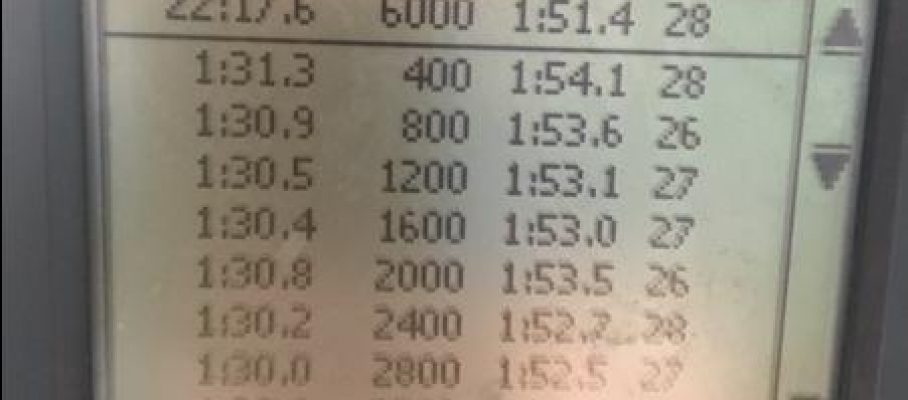
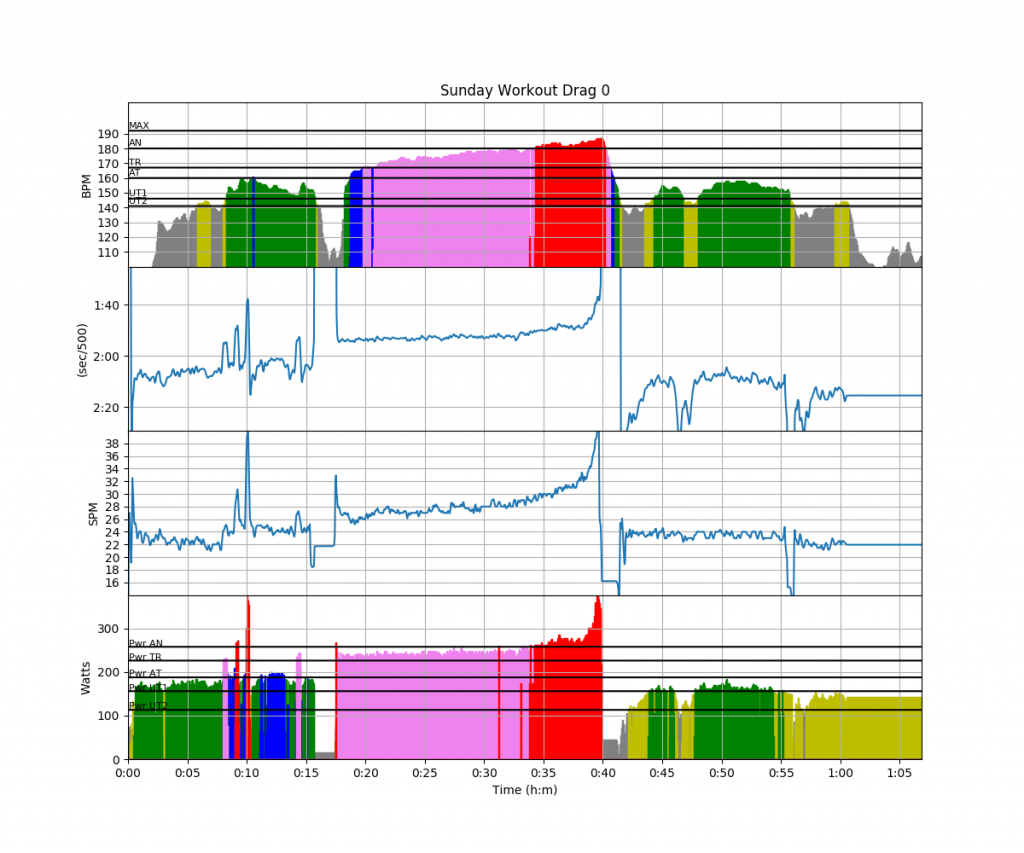


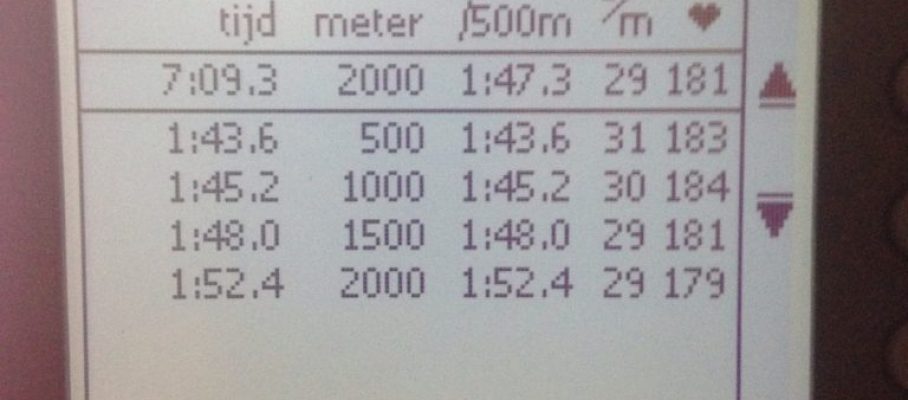
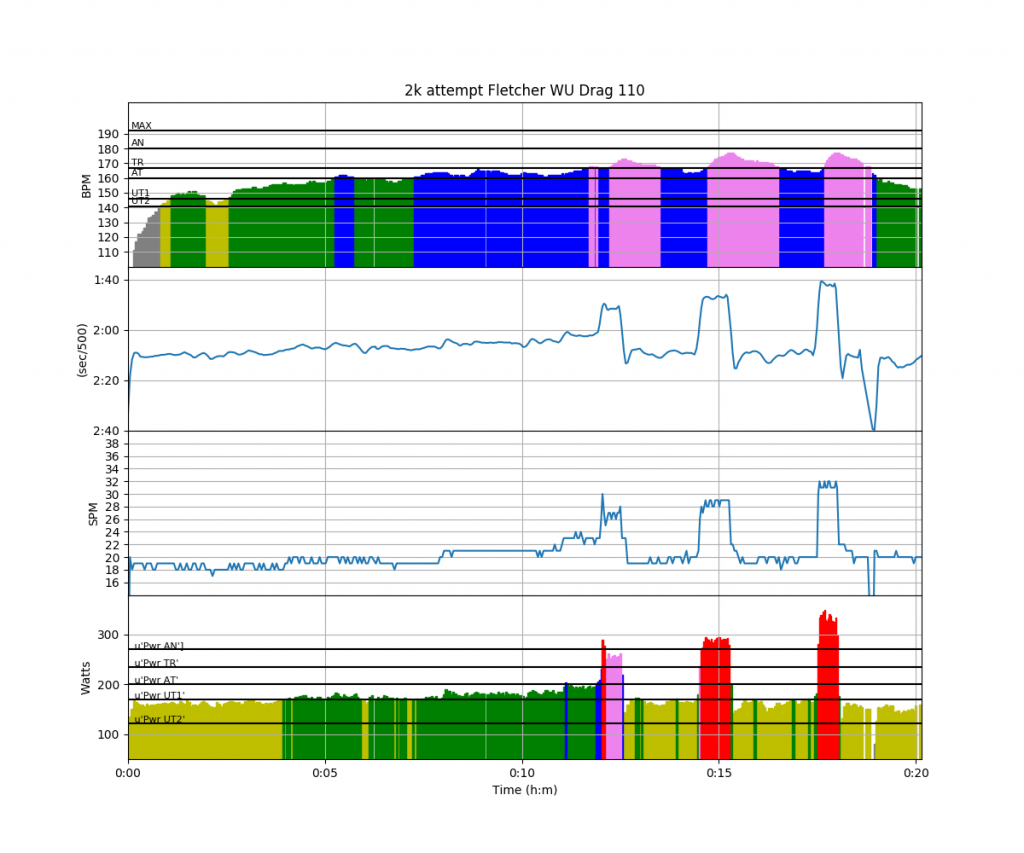
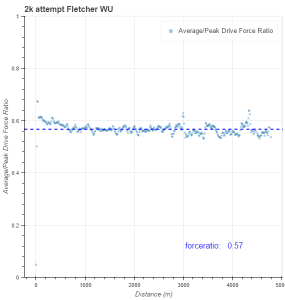
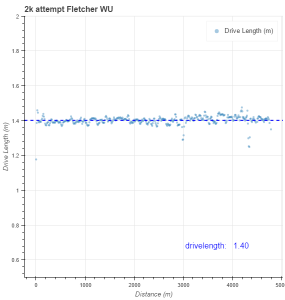
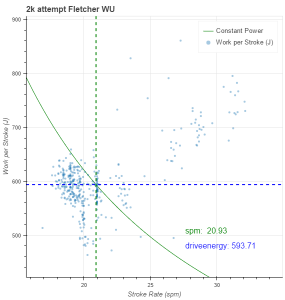
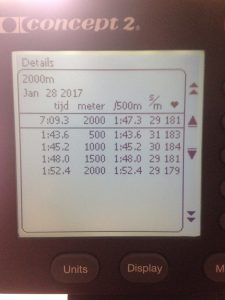
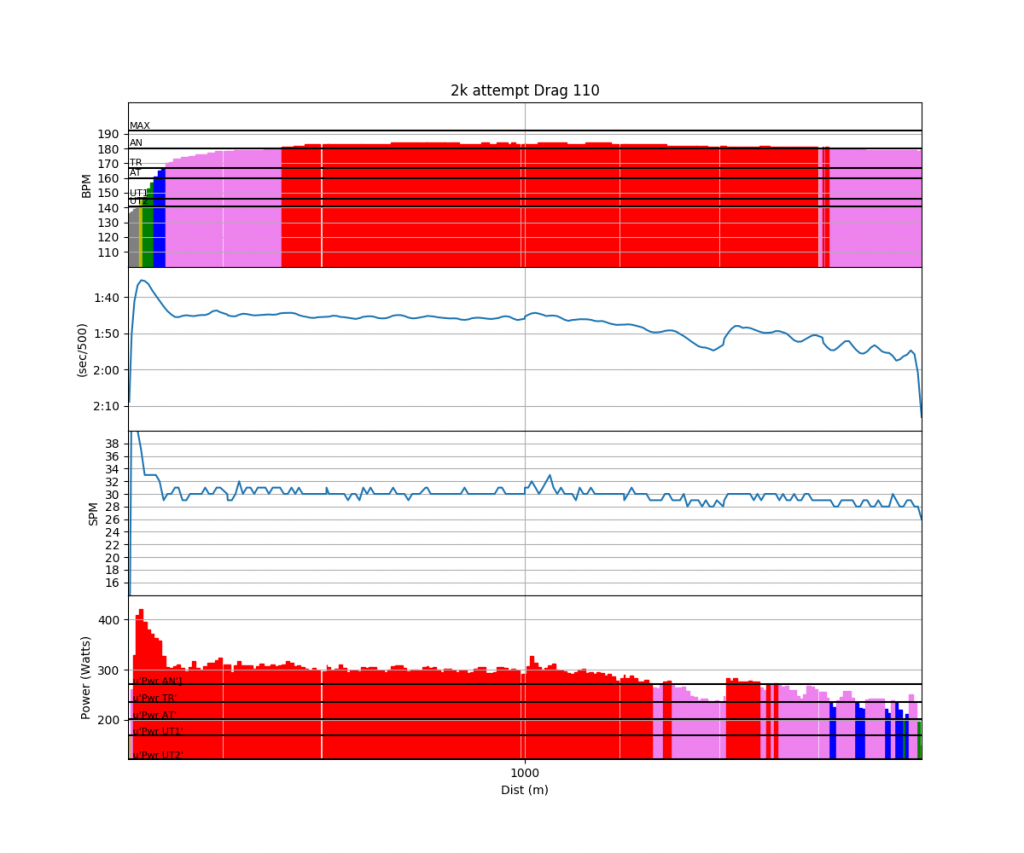
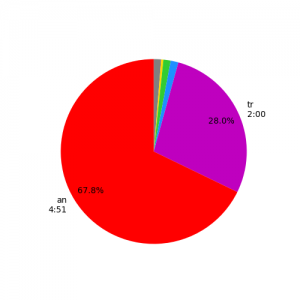
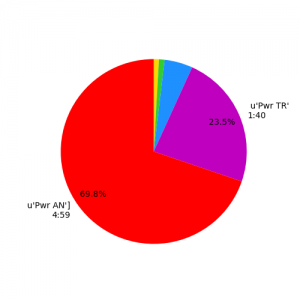
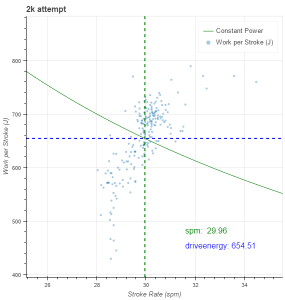
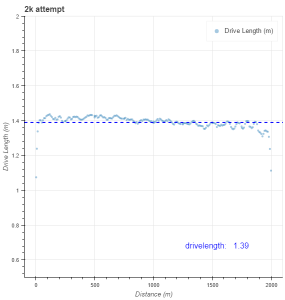
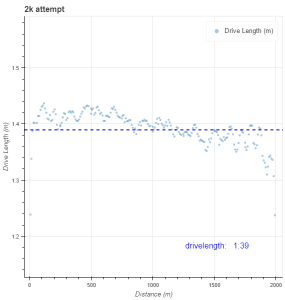
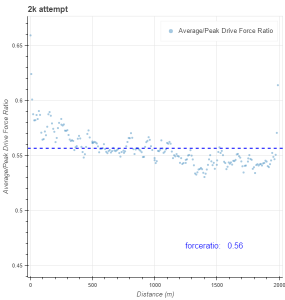
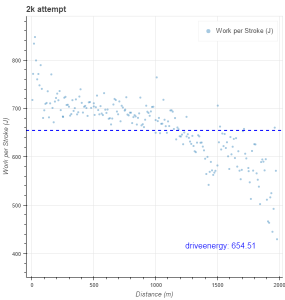
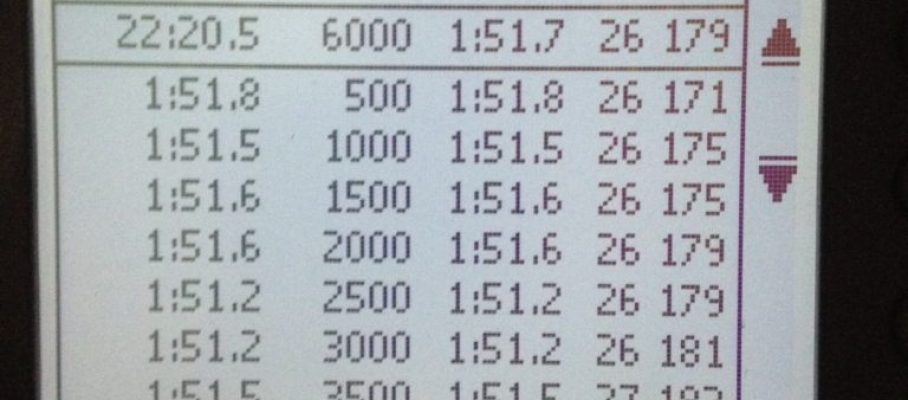
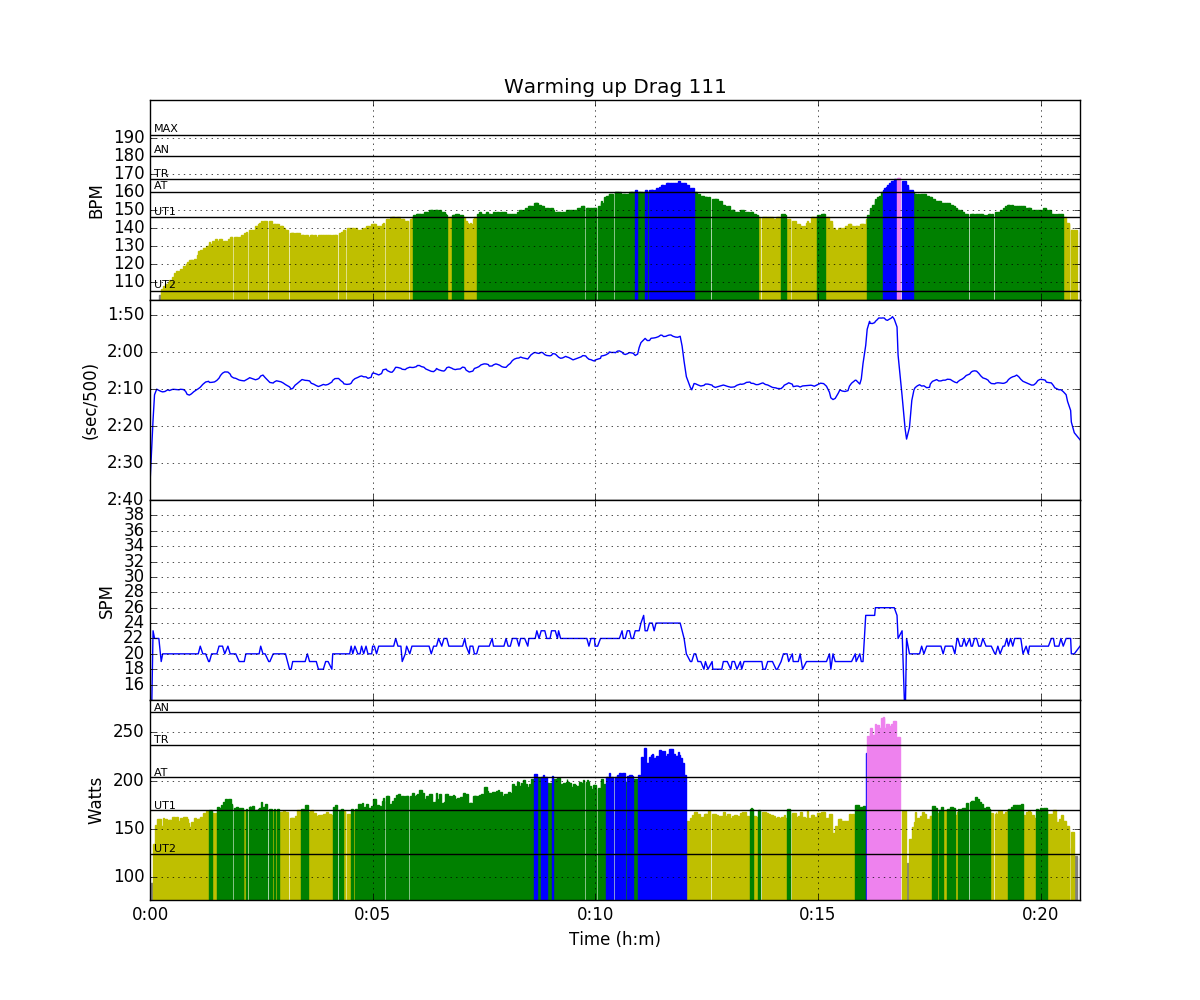
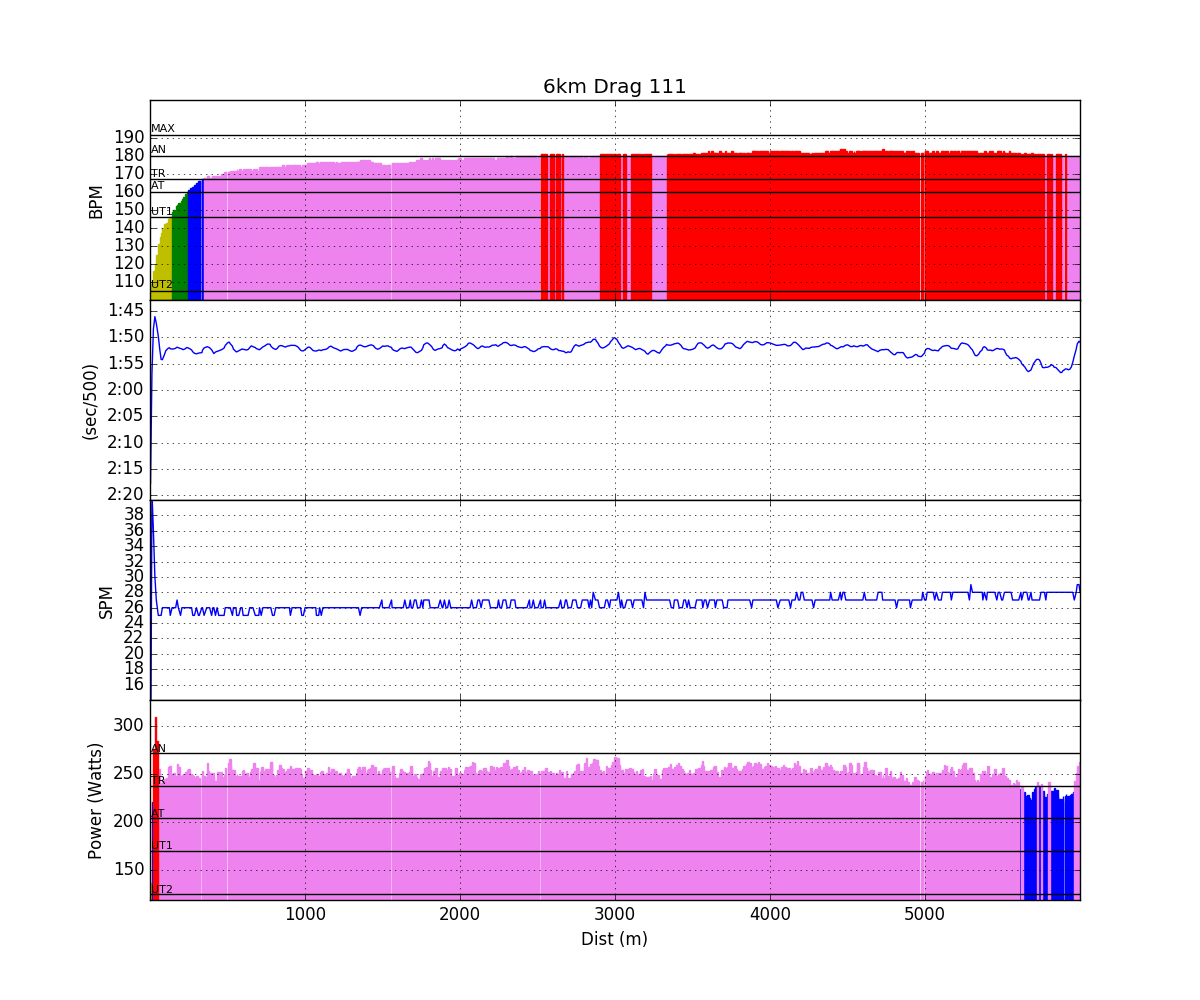






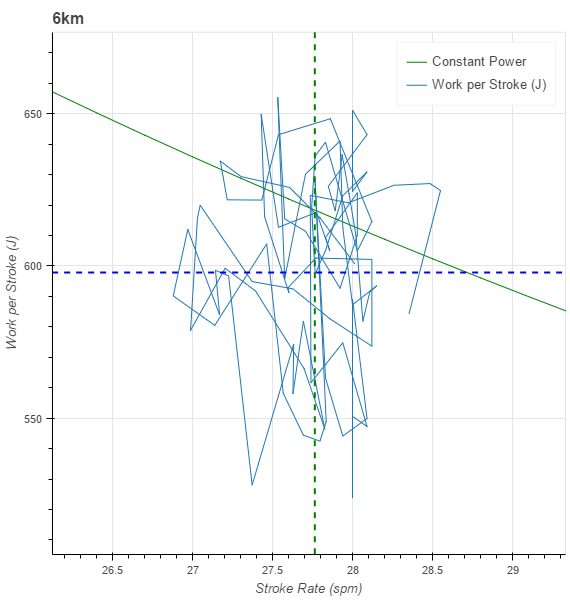
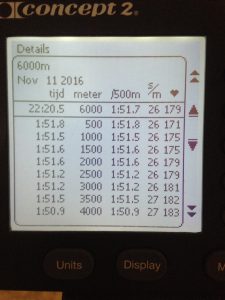
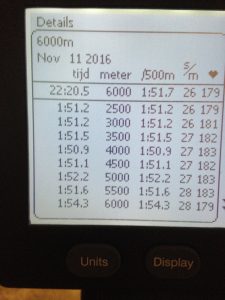
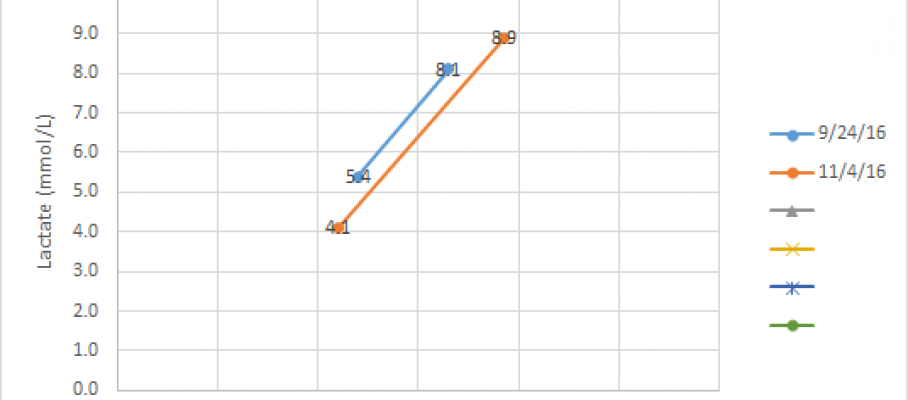
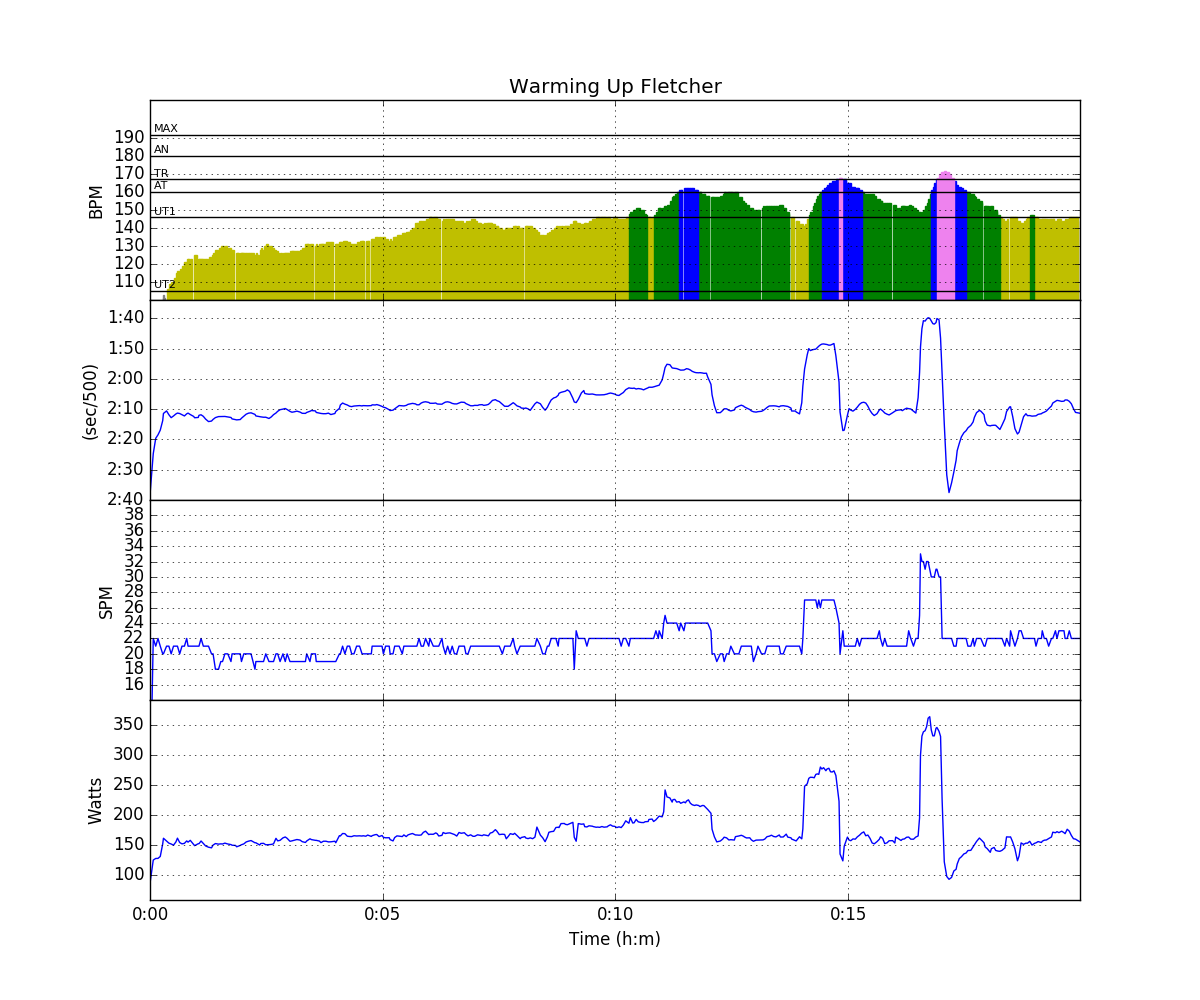
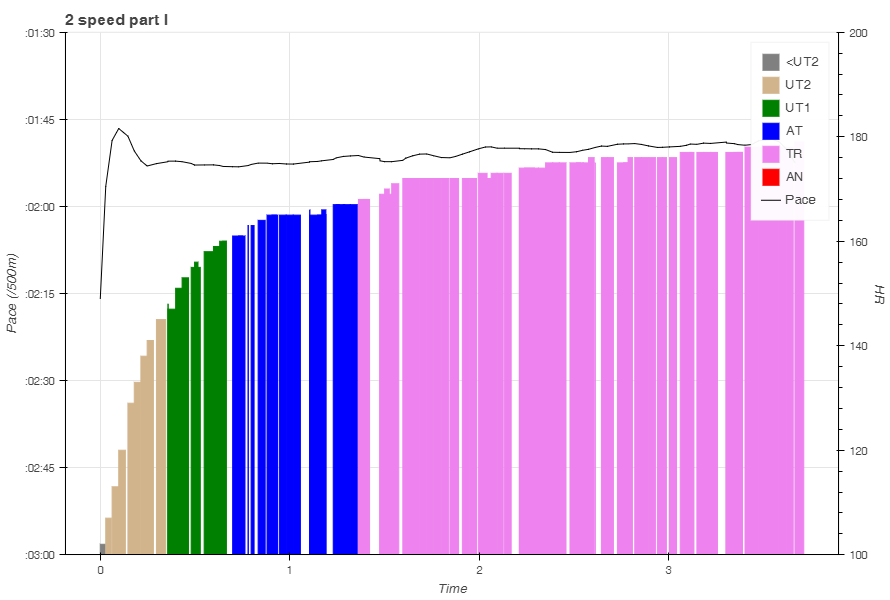
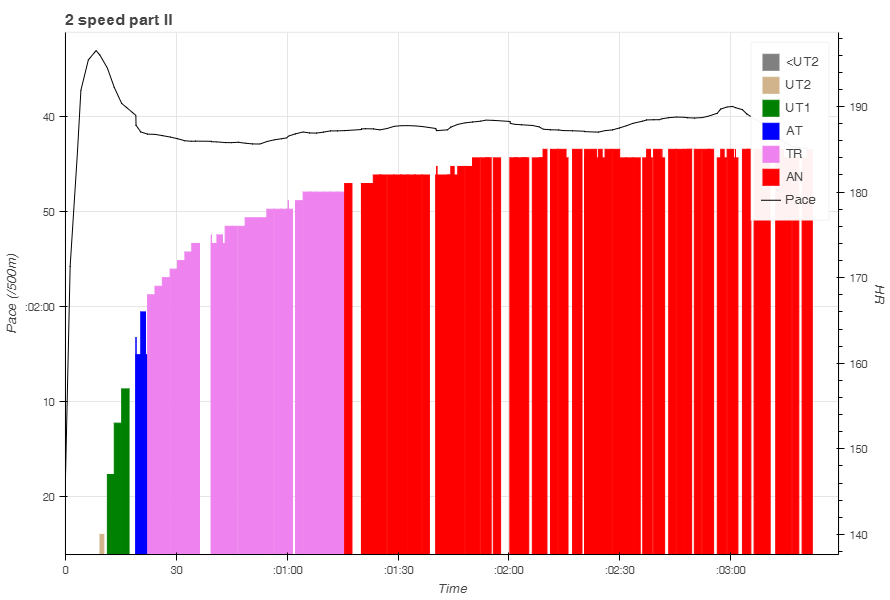
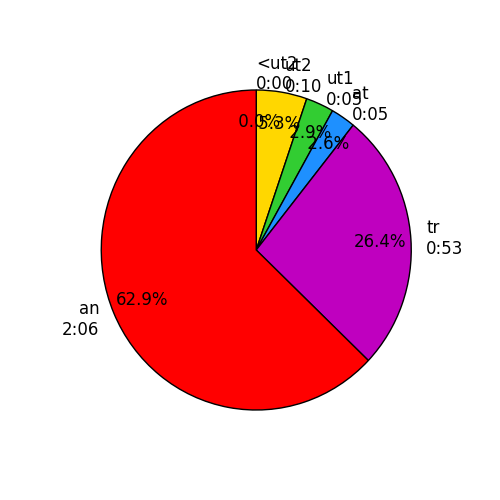
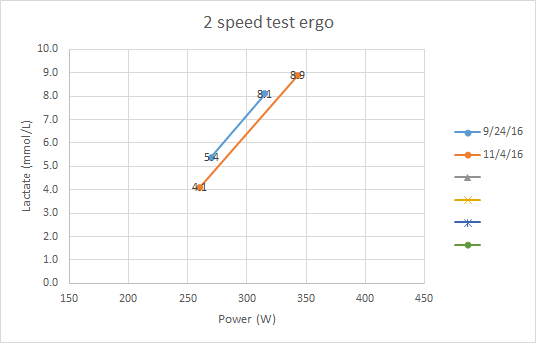
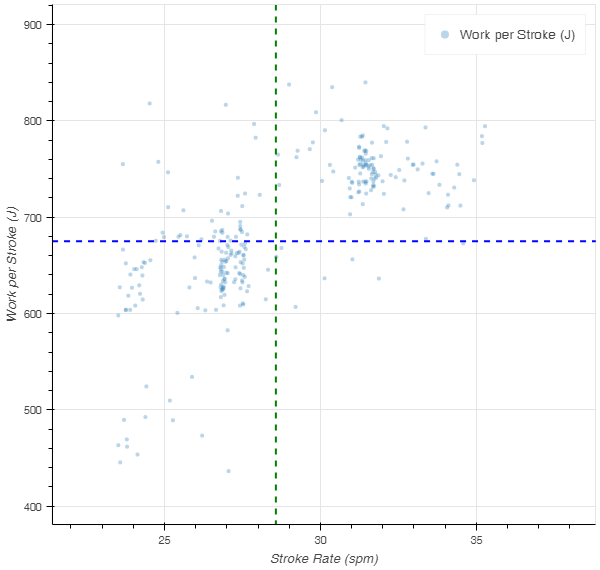

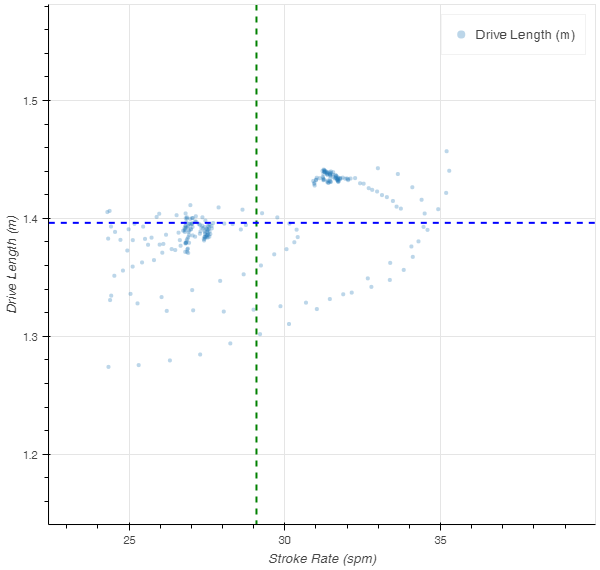
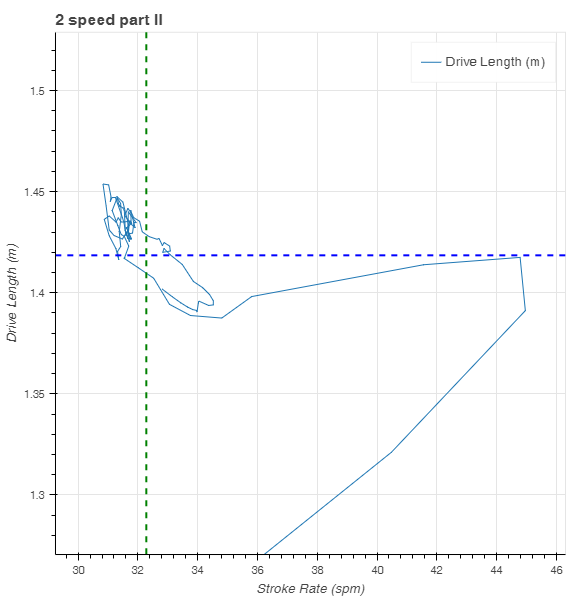



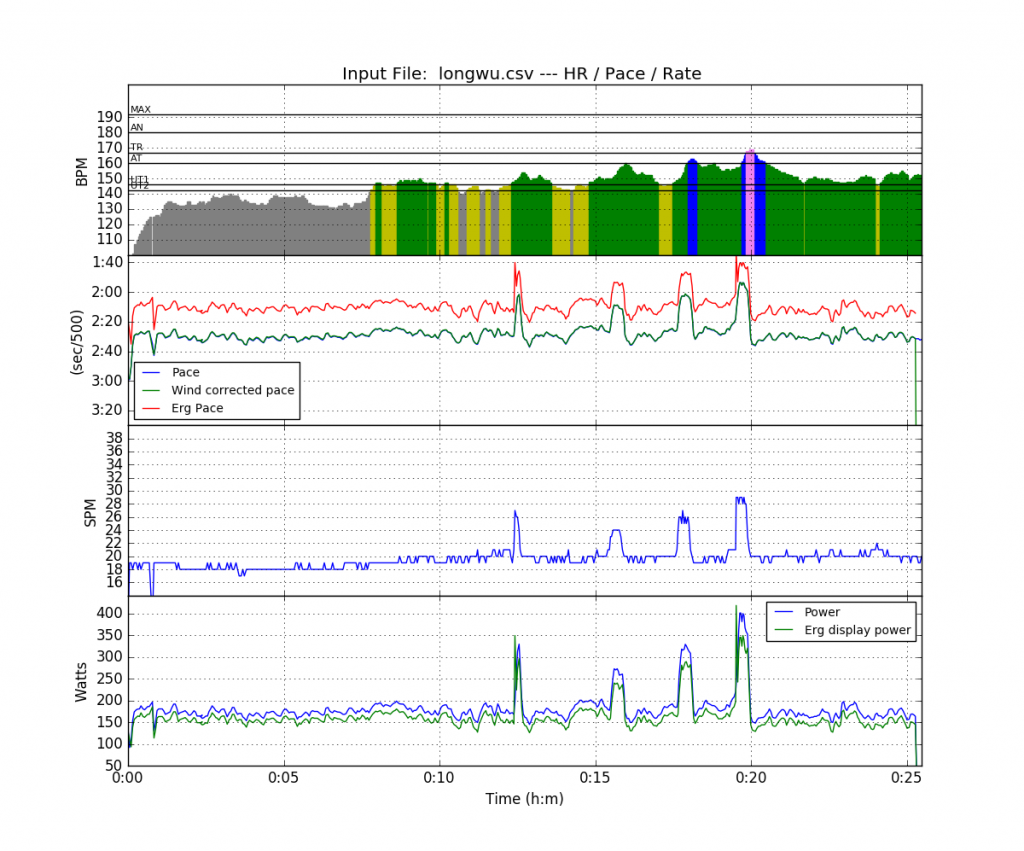
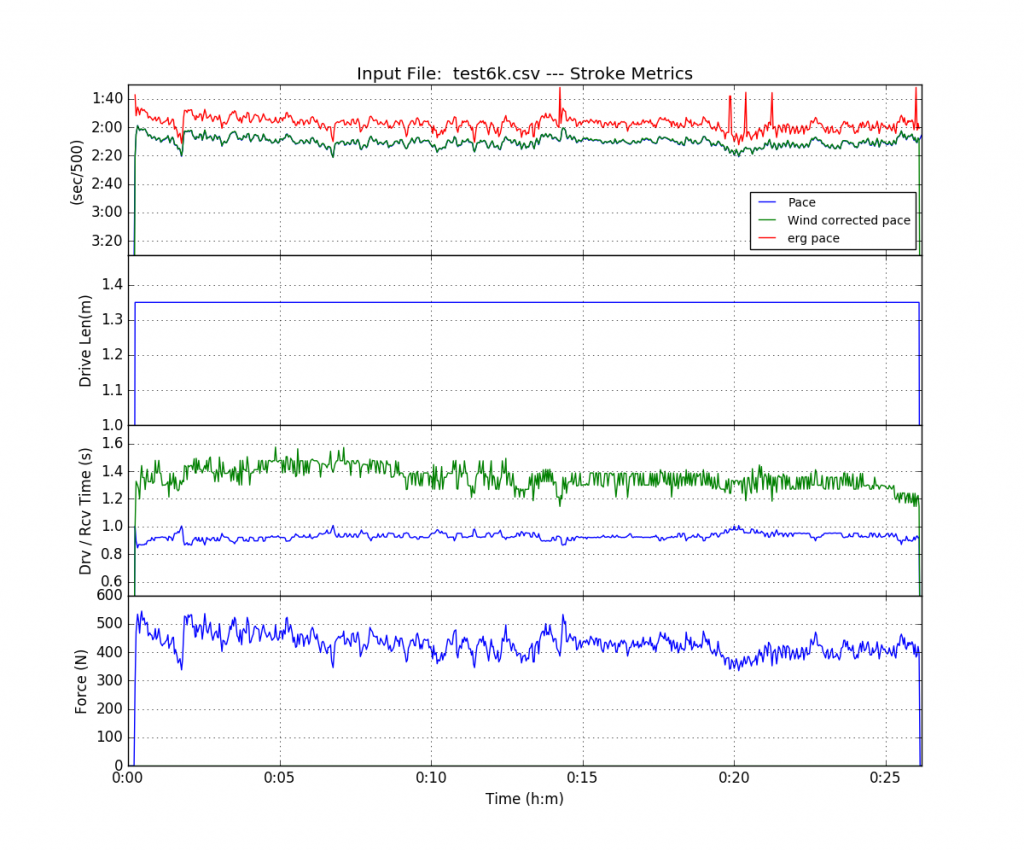
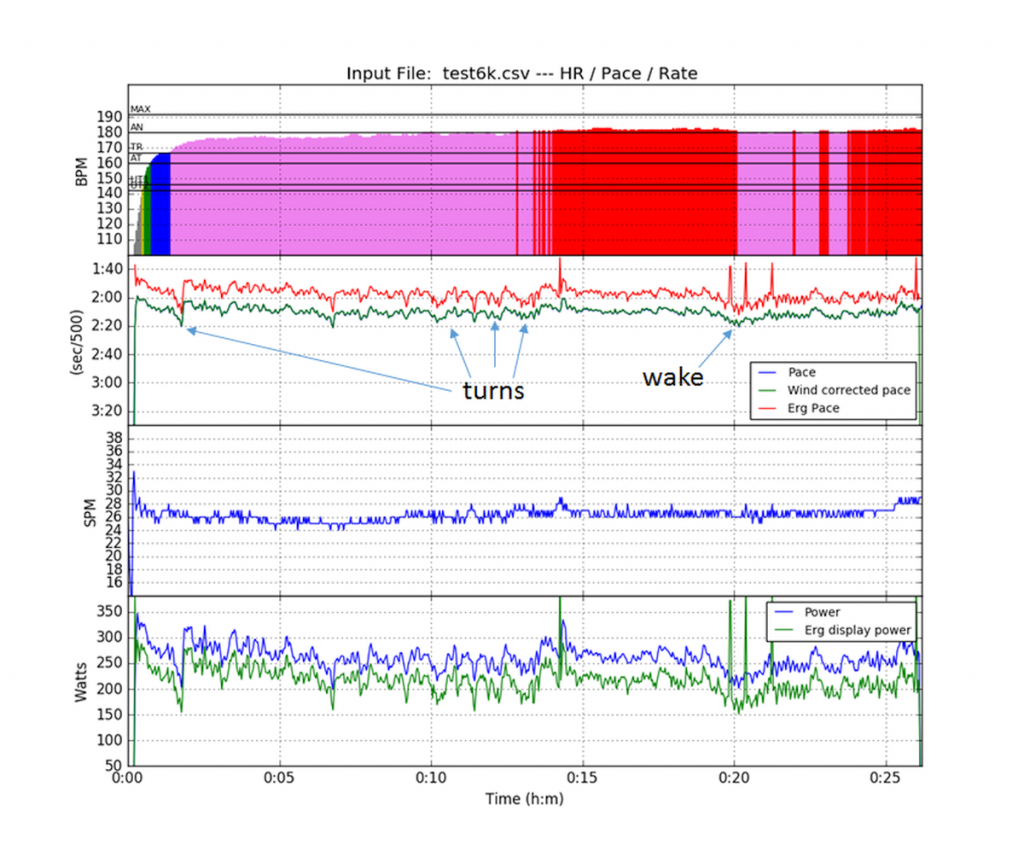

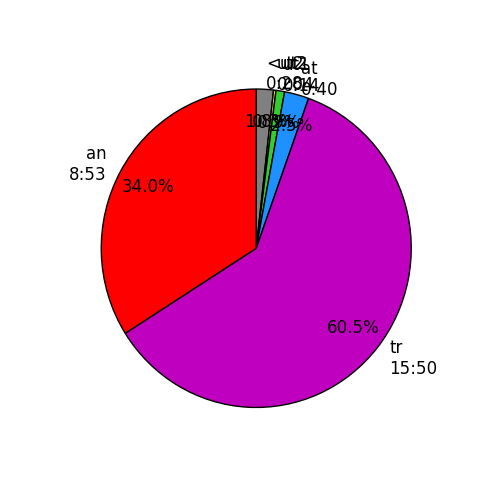
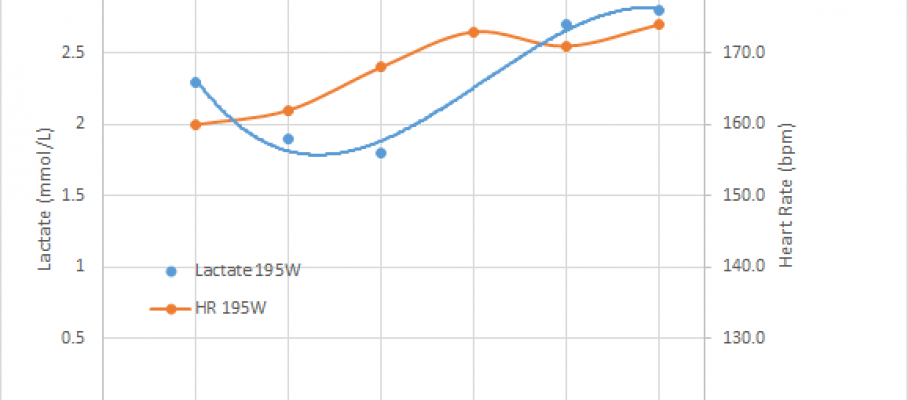
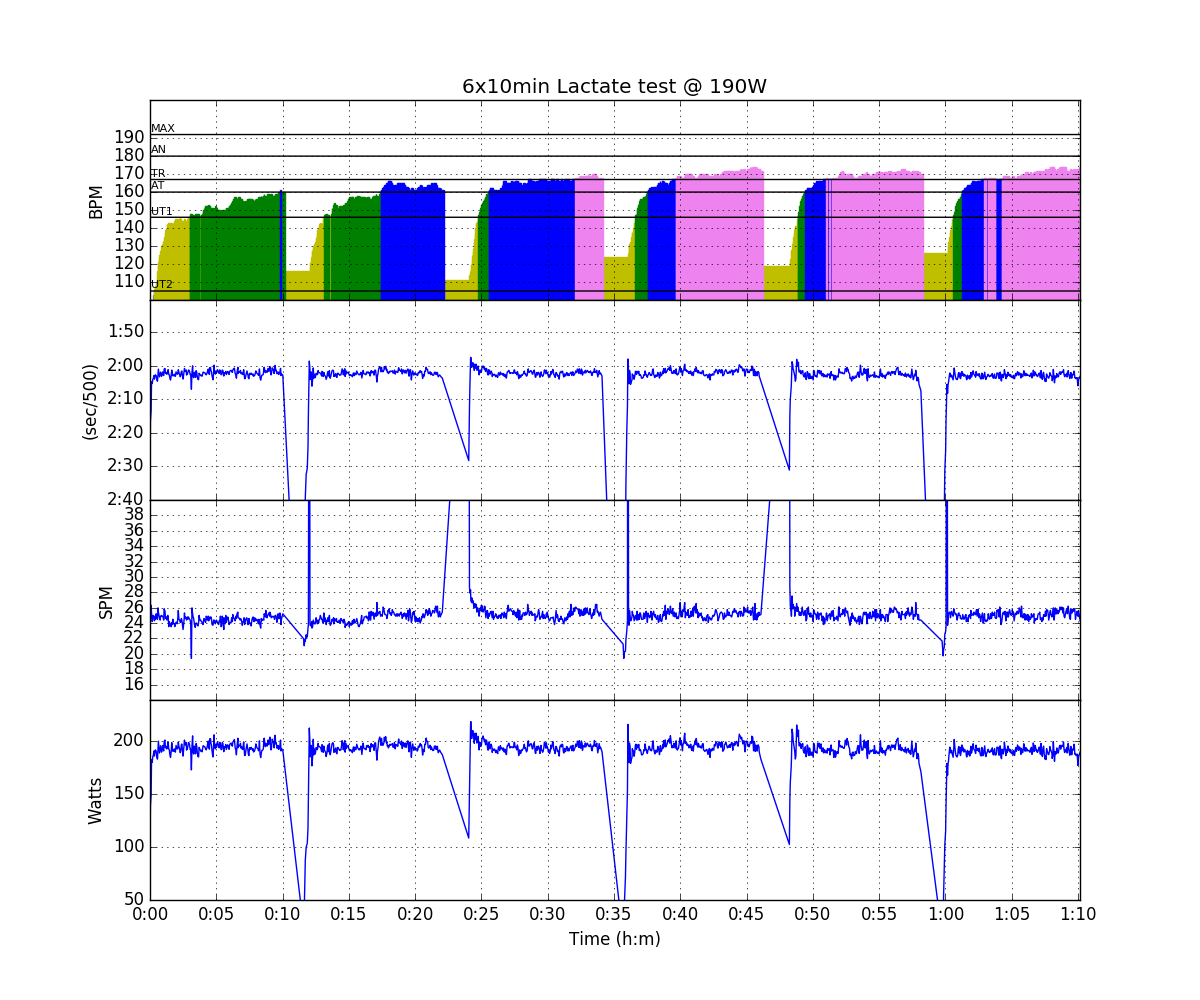
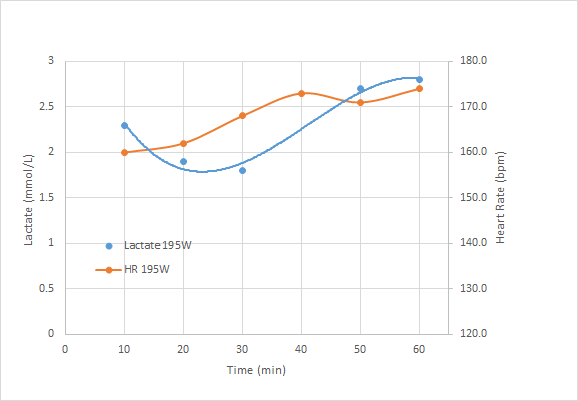
Nov 23 2018
Lactate Test Results – Did I get fitter?
Lactate Step Test Results
I received the Lactate Step test results. Here’s a chart comparing them with results from the 2017 test:
So my 2.0 mmol/L level is fitted to be at 202W (HR 164) and my 4.0 mmol/L level is fitted to be at 237W (HR 174). A year ago, the results were 212W (HR 164) and 247W (HR 178) respectively. Here’s the fit curve from this year’s measurement report:
Here’s 2017 for comparison:
So, did my fitness decrease or is this identical within the measurement error?
It’s actually not so important. A year ago, I concluded that 211W was a high value and I decided to do my steady state rows below 200W. This year I will draw a similar conclusion: Steady state not above 200W.
From data on rowsandall.com, I estimate I can hold a pace of 1:55 to 1:57 for one hour (220 to 230 W):
On Rowsandall.com, I will lower my FTP value to 220W. At this point in my training, a 1:57 pace for an hour feels more realistic (and was what I achieved when I last did it, but that was almost a year ago).
By sanderroosendaal • Uncategorized • 0 • Tags: lactate, lactate test, rowing, test, training